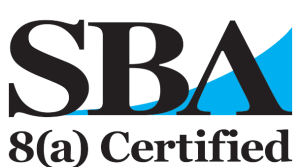Holland Electronics
This LA-2150H 20 dB Gain high-output line amplifier has been specifically designed for satellite systems with a frequency range of 950 to 2150 MHz. like DirecTV, DISH Network, FTA and others. A Perfect Amplifier for In-Line F connection to overcome excessive Satellite Dish cable lengths and Splitter loss. It powers itself from the Voltage on the line already from the Receiver to the LNB(s). There is an optional Power Supply and Inserter unit available below for Use on lines without Voltage Feed(s). This Amplifier is perfect for In-Line DC Powered F connection to overcome excessive Satellite Dish cable lengths and Splitter loss.
This amplifier can operate off of the existing line voltage that is present on the cable line feed from the Satellite Dish LNB(F) and the Satellite Receiver, as it also passes the power through.
If your Satellite Head-end or Multiple Dish / Receiver scenario doesn't make DC line voltage available, the PS-10 Power Supply (separate item) can be coupled in circuit to feed DC power to the Amplifier.
Also, if you need to block the DC voltage from passing on either side of the Amplifier, use the VBC (Voltage Blocking Coupler, separate item) to block the DC voltage from passing to other devices and prevent damaging them!Compare to TERK BIA 20, Eagle Aspen SA-2050 and Phillips SDW5005O
Amplifiers
All of these Amplifiers will Pass HDTV, DTV and Analog Signals. Those that have a Specific Band-Pass of up to at least 890 MHz are good for VHF/UHF and FM also... Making Them Suitable for Home use of Off-Air Antenna Television Carriage. Those Amplifiers with Band-Pass Specific to 2150 MHz means that they Boost Satellite Signals... If these same Amplifiers have a Start Frequency of between 5 and 54 MHz, they are Wide-Band and Carry Cable TV or Off-Air in Addition to the Satellite Signals. If the Star Frequency is around 950 MHz, then they are Solely for Satellite Carriage.
Amplifiers- Should be utilized for these two reasons:
- To increase already adequate signal as to pre-emphasize the level to balance out losses after the amplifier such as splitters and cable in the distribution system on its way to various TVs in the house, and
- To maintain Signal level to noise at the origin (your antenna) so that low signal levels from far away stations are not lost in a longer than average cable run to the location in the house where the signals would be further distributed to the TVs desired.
About the Numbers
Amplifiers and Preamplifiers come with various gain numbers. Old Analog signals needed a high Carrier to Noise to get a high Signal to Noise Ratio of the Picture on your TV set, it was a one to one relationship and more was sometimes better. Digital Signals are lower in amplitude in comparison to Analog (a benefit) and that commensurately, the threshold at the TV is lower for a perfectly good picture. Very little in between, you either get a good picture or you don´t. Snow in the old analog pictures has been replaced by "Tiling" or little blocks within the picture not keeping up with the scene changes in today´s Digital TV viewing. Tiling is therefore today´s Digital Snow. It means (more often than not) that you are not far enough above the threshold of signal level into your TV to prevent little hiccups, drop-outs and interferences in signal from interrupting the Stream of Data. Remember that lots of things can happen from the Station on the way to your TV set!
Pre-Amplifiers are mistakenly used with the rational that it will bring in Stations that weren´t there before... It won´t, and what´s worse, using the same antenna and pre-amp with FM and TV stations close by (20-30 miles) may overdrive the amp and actually impede your ability to provide goods signals to you TVs. If you desire to use a pre-amplifier, don´t use a high gain when you have local stations, get one with a FM trap to keep FM radio stations from over-driving the amp and remember that today´s Digital Signals don´t need to be high to get a picture. Some Pre-amps come Band Selective as well, realizing that the difference in antenna UHF/VHF gain means that one band needs to be amplified as opposed to the other.
The gain of a Line Amplifier should be selected to zero out the loss that follows it. In other words, if you have fifty feet of cable and a two-way splitter, then a 10 db amplifier will be fine. Conversely, if you have an eight-way splitter and hundreds of feet of cable, you will need an amplifier with a higher gain. Just as in the case of a Pre-Amplifier, however, bigger is not always better.



















